Efficient Small-Scale Production of Proteins
Over the last three decades, numerous protein expression systems have been developed with various quality requirements on large and small scales. Huge steps have been made in large-scale protein production in mammalian systems while the small-scale mammalian systems are expensive and inflexible. Thus, small-scale production is done in simpler expression systems, sometimes sacrificing the quality of the proteins. However, relief is on the way.
Over the last three decades, numerous protein expression systems have been developed with various quality requirements on large and small scales. Huge steps have been made in large-scale protein production in mammalian systems while the small-scale mammalian systems are expensive and inflexible. Thus, small-scale production is done in simpler expression systems, sometimes sacrificing the quality of the proteins. However, relief is on the way.
New developments in mammalian cell transfection, however, allow the highly efficient transfection of suspension cells relevant for protein production. This not only facilitates a simpler approach for the generation of stable production cell clones, it also turns protein production in transiently transfected cells into a true alternative for small-scale protein production. This allows scientists to use proteins resembling the original human protein for all kinds of applications, potentially leading to better results in pharmaceutical research and development.
Once a new gene is discovered, the corresponding protein, the actual trigger of cellular functions, needs to be characterized, e.g., by crystallography or NMR techniques. Subsequently, the protein's role within the cellular metabolism must be unravelled. Finally, the protein may be investigated as a target for the development of small molecule drugs or it may become a drug candidate by itself.
The demand for recombinant proteins is increasing. More and more proteins are required for research applications and numerous new protein-based drugs are in pre-clinical or clinical testing, constituting an increasing need for new clinical-grade expression systems and large-scale production capabilities.
While some analytic applications require only sub-milligram amounts of research-grade material, clinical applications often require clinical-grade material on a multi-kilogram scale (Table 1). Protein research requires the production of recombinant proteins in quite different amounts and qualities.
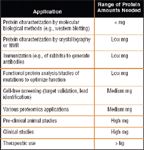
Table 1. A Short Overview of Applications Associated with Protein Production.
Mammalian Cells are the Best
Although transgenic plants and animals may one day become commercially competitive platforms for the large-scale manufacturing of proteins, almost all biologics on the market today are manufactured in either a mammalian or microbial expression system.1,2 For clinical applications, cultivated mammalian cells are the dominant system for producing recombinant proteins. Proteins produced in mammalian systems are properly folded, assembled, and post-translationally modified. In contrast, research-grade material is often produced in much simpler expression systems such as E. coli. Although for many applications it would be beneficial to use proteins that are closer to the original human pattern, simpler expression systems are often chosen because they are much cheaper and more flexible for production of small amounts of proteins.
This article is a brief introduction to different expression systems, focussing on mammalian cells and the latest developments in the transfection of mammalian cells. These new transfection technologies can speed up the generation of stably transfected mammalian cell clones significantly by direct transfection of suspension cells and can turn transient protein production from mammalian cells into a true alternative to small-scale protein production in simpler expression systems. For the first time, high-quality proteins can be expressed quickly and flexibly in mammalian cells and are thus available for standard R&D applications.
Alternative expression systems
Let us review the four dominant sources of proteins. As a rule of thumb lower level organisms are the fastest and cheapest systems for protein expression. E. coli doubles about every 20 minutes and yeast every hour, whereas mammalian cells will take a day or more. However, E. coli often yields incorrectly folded and modified protein. In contrast, mammalian cells are expensive and produce comparably lower yield, but a high quality protein product (Figure 1).
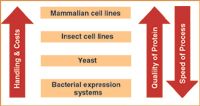
Figure 1. A Brief Overview of the Relative Advantages of Various Expression Systems.
Bacteria
The genetics and physiology of gram-negative E. coli are very well understood. Its enormous proliferation potential makes it an attractive system for protein production. One major disadvantage of E. coli is that protein folding is often not comparable to the protein in its genuine human form. Many efforts are being made to improve this issue, for instance, by tagging secretion signals on the protein to avoid its accumulation in inclusion bodies and to simplify purification. Nevertheless, if mammalian glycosylation is required to make a protein active, E. coli cannot be used.
Yeast
The most commonly used yeasts are S. cervisiae and P. pastoris. They are a link between prokaryotic and higher eukaryotic expression systems. They offer a combination of low-generation periods and low requirements in terms of culture conditions with a eukaryotic folding and secretion apparatus. Yeast does glycosylate proteins, which may be sufficient for some products. On the other hand, non-mammalian glycosylation is potentially immunogenic, and if that is a concern for a particular protein, then yeast is perhaps a poor choice.
Insect cells
Protein production in insect cells has become more and more relevant for research and development applications. Insect cells are easy to transfect with baculovirus vectors to yield high amounts of protein — with post-translational modifications which are quite close to, but not as complex as, in human systems. Most relevant cell lines are Sf-9 and Sf-21 (from Spodoptera frugiperda) and HighFive (from Trichoplusia ni).
Mammalian Cells
Despite comparably high production costs, 60–70% of all recombinant protein pharmaceuticals are produced in mammalian cells.3 The major reason is that post-translational modifications of the recombinant proteins largely correspond to the genuine human patterns, and that correspondence is indispensable when it comes to mediating immunological effector functions (e.g., recombinant antibodies). Protein production rates in mammalian cells are relatively low, however, so many efforts are being made to improve those rates.
Protein Production in Mammalian Cells
The development of a large-scale manufacturing process for recombinant proteins in mammalian cells usually follows a well established procedure: gene transfer, selection of transfected cells, production testing and preservation, establishing cultivation, and protein purification. The high yields obtained in today's processes are the result of 20 years of research that have led to a better understanding of gene expression, metabolism, growth, and apoptosis delay in mammalian cells. Overall, efforts have led to improvements in vectors, gene transfer, host-cell engineering, medium development, screening methods, and process engineering and protein purification. However, although these improvements have given to a leading role to mammalian cells in the large-scale production of therapeutic proteins, little improvement has been made with respect to small-scale protein production in mammalian cells.
Cell culture in suspension
Most cell lines used for large-scale protein production grow in suspension, and reach higher cell densities than adherent cell types. Furthermore, it is much easier to scale up the protein production process for cells grown in suspension. The most frequently used cell lines for protein production are chinese hamster ovary (CHO), suspension CHO, baby hamster kidney (BHK), mouse myeloma (NS0), human embryonic kidney (suspension 293), or human retinal cells (PER.C6).
Commercial media of high quality are available for cell culture. Fetal bovine serum, added at a concentration of 1 to 20%, is still widely used for regular propagation of mammalian cells. When it comes to therapeutic protein production, however, cell culture processes are executed in serum-free media. Modern media compositions support excellent cell culture performance in the absence of serum-provided peptides, growth factors, and an undetermined collection of proteins, lipids, carbohydrates, and small molecules. Major reasons for excluding serum are its undefined character and the risk of transmitting adventitious agents (e.g. bovine viruses and prions).
Gene transfer
Efficient gene transfer into cells relevant for protein production purposes has been a major bottleneck. Viral gene transfer systems usually have the advantage of high transduction efficiencies compared to non-viral methods. However, these methods suffer from several limitations such as the time-consuming and laborious production of vectors, elevated laboratory costs due to the high level of safety requirements, limitation of insert size, and possible immunogenic reaction in clinical trials.4
Non-viral gene transfer methods include calcium phosphate, lipofection reagents, electroporation, and ballistic gene transfer.5 Whereas electroporation and ballistic techniques usually lead to high cell mortality, calcium phosphate and lipofection often result in low transfection efficiencies especially in suspension cells. The electroporation-based Nucleofector technology is a valid alternative and has been proven to be efficient even in suspension cells relevant for protein production (Figure 2).6
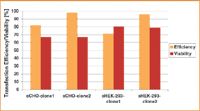
Figure 2. Efficient Gene Transfer Using Nucleofection.
Stable protein production in mammalian cells
Cells used for the production of therapeutic proteins must comply with various requirements to ensure approval for the protein as a drug. One of those requirements is to use a thoroughly defined clone. It must be guaranteed that the cells used for protein production are derived from a single clone with a specifically-defined integration site. The generation of a stable clone often requires six months or more due to selection procedures and adaptation to serum-free conditions (Figure 3A). A variety of systems for selecting transfected cells exists, including resistance to antibiotics such as neomycin, hygromycin and puromycin, dihydrofolate reductase (DHFR) and glutamine synthetase (GS) systems.
The aim of selection is to identify high producing clones, but this is a tedious and labor-intensive exercise. Several methods for isolating clones are used, the most popular one being cloning by limiting dilution using multiwell plates. Once a stable clone is selected, it must be adapted to serum-free suspension culture so that it can be used in efficient large-scale production. This adaptation process is again time consuming and bears the risk that the clone will lose its desired high producing properties. By applying novel transfection technologies such as the Nucleofector technology, suspension cells can be transfected directly in a serum-free environment. This saves significant time and reduces the risk on the way to find the right clone (Figure 3B).

Figure 3. A. The generation of a stable clone requires six months or more due to selection procedures and adaptation to serum-free conditions (SFM). B. If serum-free adapted suspension cells can be transfected, much time can be saved in the later process.
Transient Protein Production in Mammalian Cells
Working with a stable clone is optimal for large-scale production of therapeutic proteins. This is not desirable during protein characterization, functional validation, or optimization. Researchers need higher flexibility. Selecting stably transfected cells takes time, however, and even if polyclonal batch cultures are used, several weeks are required to produce a milligram of protein (Figure 4A). Thus, as a compromise, researchers often use proteins derived from simpler expression systems in spite of the fact that they deliver proteins that do not correspond well to genuine human patterns.
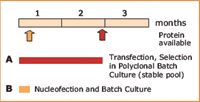
Figure 4. A. For the production of lower amounts of protein people usually transfect cells with conventional reagents. Since efficiencies are often low they add a selection agent (e.g., G418) and grow cells under these conditions for eight weeks. Substantial amounts of protein are then produced by this pool of stably transfected cells. B. Transient transfection of a cell line is significantly faster as no selection is required.
Relief is on the way. Efficient transient gene transfer systems can speed up the process of producing milligram amounts of protein.7 Using novel transfection technologies it only takes a few days (Figure 4B). As an example, 2 mg of a human IgG1 antibody was produced in four days after Nucleofection of 1 x 108 suspension CHO cells (Figure 5).
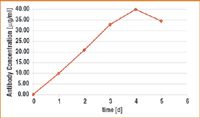
Figure 5. Production of Human IgG1 Antibody in 1 x 108 Suspension CHO Cells After Nucleofection.
Oliver Gresch, Ph.D., and Hans-Guenter Bruenker, Ph.D., amaxa GmbH, Nattermannallee 1, 50829 Cologne, Germany, phone: +49 221 99199 0, fax: +49 221 99199 111, oliver.gresch@amaxa.com.
References:
1. Roy N and Agarwal S. Therapeutic Protein Production – An Overview. In: Cooper E editor. Business Briefing: Future Drug Discovery. London: World Markets Research Center Ltd; 2003 p. 79-82.
2. Thiel K. Biomanufacturing, from bust to boom...to bubble? Nature Biotechnol. 2004; 22:1365-1372.
3. Wurm F. Production of recombinant protein therapeutics in cultivated mammalian cells. Nature Biotechnol. 2004; 22:1393-1398.
4. Thomas C, Ehrhardt A, Kay M. Progress and problems with the use of viral vectors for gene therapy. Nature Reviews Genetics. 2003; 4:346-358.
5. Niidome T and Huang L. Gene therapy progress and prospects: nonviral vectors. Gene Therapy. 2002; 9:1647-1652.
6. Gresch O, Engel F, Nesic D, et al. New non-viral method for gene transfer into primary cells. Methods. 2004; 33:151-163.
7. Schlaeger E, Kitas E and Dorn A. SEAP expression in transiently transfected mammalian cells grown in serum-free suspension culture. Cytotechnology. 2003. 42:47-55.
VERAXA and Voyager to Create Combined Business for Advancing Pipeline of Next-Gen Cancer Therapies
April 23rd 2025The proposed business combination would create a publicly traded, clinical-stage biopharmaceutical company that will focus on developing a pipeline of next-generation cancer therapies.
Tokyo University of Science Research Team Explores Improved Delivery of Antisense Oligonucleotides
April 18th 2025Using cholesterol-modified oligonucleotides, the research team aims to improve the delivery of antisense nucleotide-based therapies for treating neurodegenerative diseases and brain cancers.
Thermo Fisher Opens Advanced Therapies Collaboration Center in California
April 18th 2025The 6000-square-foot facility will provide cell therapy developers the support they need to transition to CGMP manufacturing, and an expanded footprint of the new center is expected to open in Philadelphia later in 2025.
